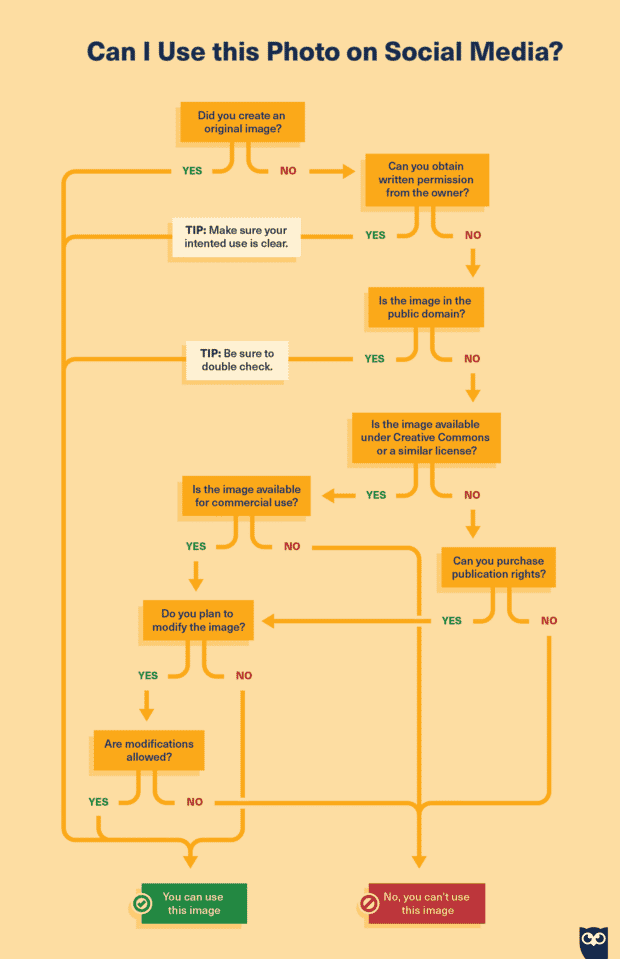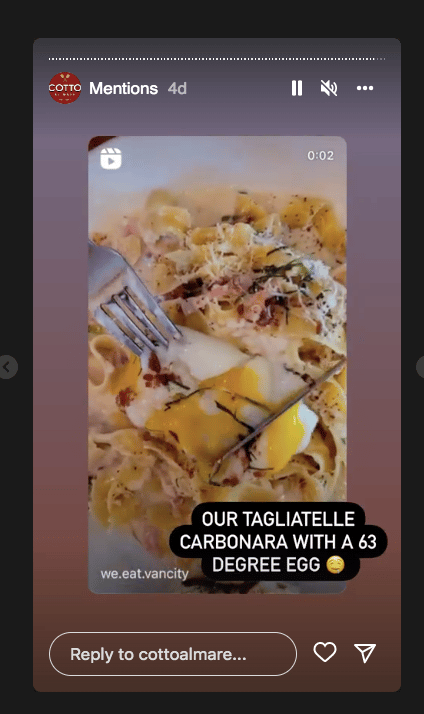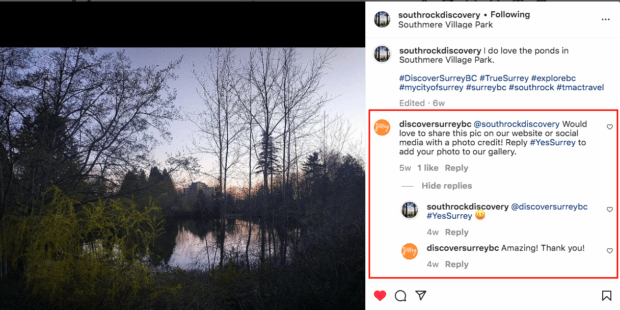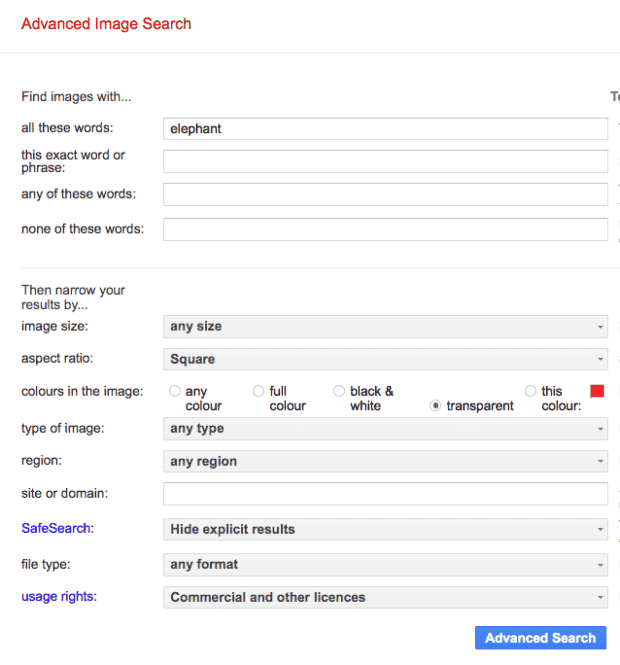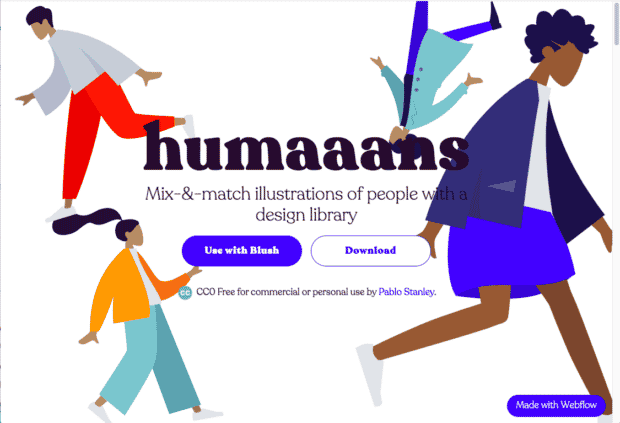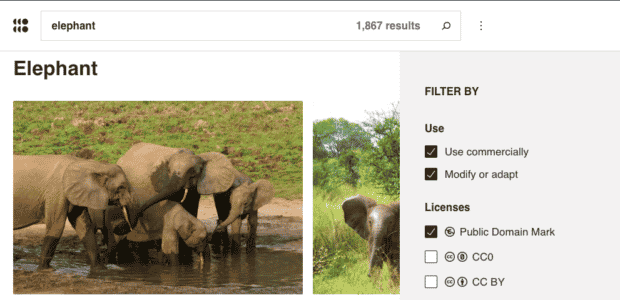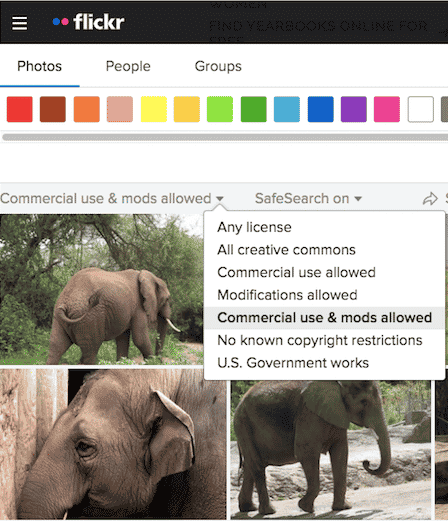Image Copyright on Social Media: Everything You Need to Know
Image copyright is not anyone’s idea of fun dinner table conversation. But for social marketers, it’s a need-to-know.
Content with images gets significantly higher engagement. If you don’t have the time, tools, or resources to create all of your own visuals from scratch, you need to understand how to properly find, use, and credit images created by others, without running afoul of the law.
Bonus: Get the always-up-to-date social media image size cheat sheet. The free resource includes recommended photo dimensions for every type of image on every major network.
What is image copyright?
Image copyright is the legal ownership of an image. Anyone who creates an image holds its copyright, including the exclusive rights to copy or reproduce it. This is automatic: Copyright exists even if the creator never registers their work with a copyright office.
Image copyright exists as soon as an image is created. All types of visual art are subject to copyright:
- photographs
- digital art
- infographics
- maps
- charts
- paintings
… and so on.
The specifics of image copyright laws can vary a little bit among countries. Fortunately, 181 countries—including Canada and the United States—are members of the Berne Convention treaty, which sets basic copyright standards.
According to the treaty (and Canadian and U.S. copyright laws), a copyright owner has exclusive rights to:
- Translate the work (if it includes text)
- Reproduce the work
- Make derivative works based on the work (such as using an image as background in a video, or otherwise modifying the image)
- Distribute the work to the public
- Display the work publicly
In short: If you created an original image, you own it. That ownership gives you exclusive rights to display and reproduce what you create.
If you didn’t create it, you need permission to use it. We’ll go into more details throughout this post.
What is fair use?
Fair use is an exception that allows work protected by copyright to be used without permission in certain cases that are “beneficial to society.”
Common contexts for fair use laid out in Section 107 of the U.S. Copyright Act are “criticism, comment, news reporting, teaching (including multiple copies for classroom use), scholarship, or research.”
You’ll notice marketing does not appear on this list.
In fact, one of the main questions used to determine fair use is “whether such use is of a commercial nature or is for nonprofit educational purposes.” Nonprofit and educational uses are much more likely to be considered fair use.
Other factors used to determine fair use include:
- How much of the work is used. So, for example, quoting a couple of lines of text is more likely to be fair use than reprinting a whole paragraph or chapter. For images, this is trickier to apply.
- How the use affects the potential value of the original work. If you post someone else’s image without permission, you’re getting likes and other engagement that should be going to the original creator. That devalues their work.
What is Creative Commons?
Creative Commons is a nonprofit organization that developed a set of licenses to help standardize copyright permission and attribution. You may have seen Creative Commons (or CC) licenses on sites like Flickr, YouTube, or Wikipedia.
Here’s a great example of CC license attribution in action on YouTube. The video, created by Sean Riley, not only explains the history of Creative Commons but properly sources all the CC-licensed images, sounds, and so on, in the video description.
There are several different Creative Commons licenses. They give artists the ability to get quite specific about how their work can be used. That means you can’t just assume you can use something because it has a CC license.
Types of Creative Commons licenses
Here are the different types of CC license you might find online. As you read them, keep in mind that marketing is very clearly a commercial purpose.
- Attribution-NonCommercial-No Derivatives (CC BY-NC-ND): This license means you can copy and redistribute an image – but you cannot modify it, and you cannot use it for commercial purposes. And, as the license name implies, you must provide attribution.
- Attribution-No Derivatives (CC BY-ND): You can copy and distribute the image, including for commercial purposes, but you can’t modify it. So, for example, you can’t add overlay text, crop, or apply filters. Attribution is required.
- Attribution NonCommercial-ShareAlike (CC BY-NC-SA): You can use the image and adapt it into something new. However, you cannot use it for commercial purposes, and you have to share your modified work with the same type of CC license and provide attribution.
- Attribution-NonCommercial (CC BY-NC): Same as the above, but without the requirement to use the same CC license on modified work.
- Attribution-ShareAlike (CC BY-SA): You can use the image and adapt it into something new. You can use it for commercial purposes, but you have to share your modified work with the same type of CC license and provide attribution.
- Attribution (CC BY): Basically the only requirement is to provide attribution.
- Public domain/No copyright: If a creator has waived all their rights, or the copyright has expired, the work enters the public domain. In Creative Commons, this is listed as CC0 1.0 Universal (CC0 1.0). This is the license to look for if you want non-copyrighted work.
The safest options when looking for images for social media marketing are attribution-only and CC0 1.0 public domain licenses. Remember, any license that includes the word “attribution” means that you must give credit to the creator.
What images can you legally use on social media?
Before we dive deep into image copyright for social media, here’s a quick cheatsheet to get you started.
Copyright laws for social media are, well, pretty much exactly the same as copyright laws everywhere else. If you want to use an image that isn’t yours, you must obtain permission. That might be through a license or through the creator directly.
For example, Instagram says, “Under Instagram’s Terms of Use and Community Guidelines you can only post content to Instagram that doesn’t violate someone else’s intellectual property rights.”
When someone shares any type of image on a public social account, that doesn’t make it public domain. They still own the copyright. However, since social media is all about sharing, there are some unique ways copyrighted images can be used.
Resharing photos
It’s typically okay to reshare images within a platform using native sharing tools. Retweets, reshares, repins, or content reshared to an Instagram story automatically credit the creator.
Plus, these actions are only possible if someone has enabled those account permissions, and are covered by the platforms’ terms and conditions.
Resharing is a great strategy for businesses both small and large. For instance, this local restaurant near Vancouver has an entire Story highlight of posts, stories, and reels shared by patrons.
Source: @cottoalmare
Remember, these kinds of reshares are all built into the platforms. Anything that requires you to copy or download an image is not a native reshare. Which leads us to…
Re-posting images in feed
Many brands repost user-generated content. In fact, this is a great marketing strategy since it fills out your content calendar while building social proof.
But if there is no built-in feature that allows native reposting, it’s necessary to ask for permission. That includes sharing content in your Instagram feed. Providing credit is also important, but it is not enough on its own.
Bonus: Get the always-up-to-date social media image size cheat sheet. The free resource includes recommended photo dimensions for every type of image on every major network.
Get the free cheat sheet now!A branded hashtag is a great way to collect user-generated content. However, it does not count as permission. Before reposting a photo—even one that uses a branded hashtag—send a DM or comment to make sure the creator is on board.
For example, #DiscoverSurreyBC is a branded hashtag for Discover Surrey. However, they still reached out for permission to use this hashtagged photo and noted they would provide credit.
Source: @southrockdiscovery
Stitches, Duets, Remix, etc.
Rather than a straight-up share, these tools allow you to build on work created by others on social media.
@gordonramsayofficial #duet with @veganrecipes Thank goodnes he didn’t dehydrate the Lamb Sauce….#ramsayreacts #vegan
Again, since these are native features, no additional permission is required beyond the attributions built into the relevant app.
The original creator will be credited automatically and notified. Anyone who doesn’t want their content used in this way can turn off the relevant options in their account.
What are the consequences of copyright infringement on social media?
If you’re caught infringing on someone else’s copyright for social media content, the first response will likely be a cease-and-desist letter. This is a letter from a lawyer instructing you to stop using the image and remove it from your account. You may also be asked to pay a sum that represents the lost revenue to the company that owns the image copyright.
If you remove the image promptly and offer a profound apology, it might not go any further. But if you’ve made money from someone else’s image, or you’ve used it in a way they find particularly objectionable, you might find yourself hit with a lawsuit.
Or, if you’re reported for multiple infringements to the social platforms, you might find yourself locked out of your account.
For instance, Instagram says, “If you repeatedly post content that infringes someone else’s intellectual property rights, such as copyrights or trademarks, your account may be disabled or your Page removed under Instagram’s repeat infringer policy.”
In short, it’s not worth the hassle, cost, and potential reputational risk to your business to infringe on someone else’s copyright. Fortunately, there are plenty of places to find images to use on social media that won’t get you in trouble.
Where to look for free and legal social media images
Hootsuite Media Library
Hootsuite’s Media Library, found within the Composer, has an extensive collection of images and GIFs for you to use – free and legal! – in your social posts.
To access the image library, start a post in Composer, choose your social network(s) and click Browse your media in the media section.
Choose Free images from the drop-down menu and enter your search terms to find the images you need.
Try Hootsuite for free. You can cancel anytime.
Google Advanced Image Search
Google Images is a good place to start your search, as long as you do it right.
Just because something appears in Google Images does not mean you can use it on social media, or anywhere else for that matter. Most of the images that appear in a Google search are copyrighted. You can’t use those without permission.
Fortunately, Google’s Advanced Image Search allows you to search for images with “commercial and other licenses.”
Source: Google
Before using any of these images, click through to find the license details. Some may be free to use for commercial purposes. Others may require payment, attribution, or both.
An extra handy feature of Google Advanced Image Search is the ability to search for images in the correct aspect ratio and size for social media.
Free stock photography sites
There are several free stock photography websites available.
There’s one for just about every need you could have as a social marketer, from classic office shots to artsy backgrounds.
In recent years several stock image libraries have been created to promote diversity and inclusivity on social media. Some of our favorites that offer free resources include:
Source: Humaaans
Read the fine print before using photos from a stock library. While many are free and available for commercial use, some may have different licenses and require attribution or payment. It’s always best to double-check.
Openverse
Openverse is a creative search engine for openly licensed media. Openverse was formerly the Creative Commons search engine, so it is based on CC licenses. You can search specifically for images that are available to modify, or for commercial use, as well as images in the public domain.
Remember: Limiting your search to the public domain will return non-copyrighted images you can use on social media.
Image copyright 5.png
Source: Openverse
Flickr
As a photo hosting site for professional and amateur photographers, Flickr is another good image database.
Start by entering your search term in the search bar. On the initial page of results click the dropdown menu to select an appropriate license. Your best bets are either “commercial use allowed,” “commercial use & mods allowed,” or “no known copyright restrictions.”
Source: Flickr
Be sure to check the license for each image, as many still require you to provide attribution.
Getty Images/iStock
Getty is one of the largest stock photography libraries in the world, offering access to more than 415 million assets in its archive, ranging from photography to vintage illustrations.
Getty Images are not free, but they are royalty-free. What that means is that you pay once based on the use you need, rather than having to pay a royalty to a photographer every time you show an image.
Getty also has a lower-budget sister site: iStock offers more than 125 million images at price points meant for small businesses and entrepreneurs. Many images are less than $20. If you’re looking for an image to form the basis of a campaign, it may be worth paying a small price to get something that’s both legal and unique.
Source: iStock
Hootsuite’s social media scheduler includes an up-to-date media library with free images from Pixabay, GIPHY, and more, so you never have to worry about image copyright when posting. Try it free today.
Want your content to be seen by more people? Boost Instagram, Facebook and LinkedIn posts in one place with Hootsuite.
Free 30-Day Trial (risk-free!)The post Image Copyright on Social Media: Everything You Need to Know appeared first on Social Media Marketing & Management Dashboard.
Categories
- 60% of the time… (1)
- A/B Testing (2)
- Ad placements (3)
- adops (4)
- adops vs sales (5)
- AdParlor 101 (43)
- adx (1)
- algorithm (1)
- Analysis (9)
- Apple (1)
- Audience (1)
- Augmented Reality (1)
- authenticity (1)
- Automation (1)
- Back to School (1)
- best practices (2)
- brand voice (1)
- branding (1)
- Build a Blog Community (12)
- Case Study (3)
- celebrate women (1)
- certification (1)
- Collections (1)
- Community (1)
- Conference News (1)
- conferences (1)
- content (1)
- content curation (1)
- content marketing (1)
- contests (1)
- Conversion Lift Test (1)
- Conversion testing (1)
- cost control (2)
- Creative (6)
- crisis (1)
- Curation (1)
- Custom Audience Targeting (4)
- Digital Advertising (2)
- Digital Marketing (6)
- DPA (1)
- Dynamic Ad Creative (1)
- dynamic product ads (1)
- E-Commerce (1)
- eCommerce (2)
- Ecosystem (1)
- email marketing (3)
- employee advocacy program (1)
- employee advocates (1)
- engineers (1)
- event marketing (1)
- event marketing strategy (1)
- events (1)
- Experiments (21)
- F8 (2)
- Facebook (64)
- Facebook Ad Split Testing (1)
- facebook ads (18)
- Facebook Ads How To (1)
- Facebook Advertising (30)
- Facebook Audience Network (1)
- Facebook Creative Platform Partners (1)
- facebook marketing (1)
- Facebook Marketing Partners (2)
- Facebook Optimizations (1)
- Facebook Posts (1)
- facebook stories (1)
- Facebook Updates (2)
- Facebook Video Ads (1)
- Facebook Watch (1)
- fbf (11)
- first impression takeover (5)
- fito (5)
- Fluent (1)
- Get Started With Wix Blog (1)
- Google (9)
- Google Ad Products (5)
- Google Analytics (1)
- Guest Post (1)
- Guides (32)
- Halloween (1)
- holiday marketing (1)
- Holiday Season Advertising (7)
- Holiday Shopping Season (4)
- Holiday Video Ads (1)
- holidays (4)
- Hootsuite How-To (3)
- Hootsuite Life (1)
- how to (5)
- How to get Instagram followers (1)
- How to get more Instagram followers (1)
- i don't understand a single thing he is or has been saying (1)
- if you need any proof that we're all just making it up (2)
- Incrementality (1)
- influencer marketing (1)
- Infographic (1)
- Instagram (39)
- Instagram Ads (11)
- Instagram advertising (8)
- Instagram best practices (1)
- Instagram followers (1)
- Instagram Partner (1)
- Instagram Stories (2)
- Instagram tips (1)
- Instagram Video Ads (2)
- invite (1)
- Landing Page (1)
- link shorteners (1)
- LinkedIn (22)
- LinkedIn Ads (2)
- LinkedIn Advertising (2)
- LinkedIn Stats (1)
- LinkedIn Targeting (5)
- Linkedin Usage (1)
- List (1)
- listening (2)
- Lists (3)
- Livestreaming (1)
- look no further than the new yorker store (2)
- lunch (1)
- Mac (1)
- macOS (1)
- Marketing to Millennials (2)
- mental health (1)
- metaverse (1)
- Mobile App Marketing (3)
- Monetizing Pinterest (2)
- Monetizing Social Media (2)
- Monthly Updates (10)
- Mothers Day (1)
- movies for social media managers (1)
- new releases (11)
- News (72)
- News & Events (13)
- no one knows what they're doing (2)
- OnlineShopping (2)
- or ari paparo (1)
- owly shortener (1)
- Paid Media (2)
- People-Based Marketing (3)
- performance marketing (5)
- Pinterest (34)
- Pinterest Ads (11)
- Pinterest Advertising (8)
- Pinterest how to (1)
- Pinterest Tag helper (5)
- Pinterest Targeting (6)
- platform health (1)
- Platform Updates (8)
- Press Release (2)
- product catalog (1)
- Productivity (10)
- Programmatic (3)
- quick work (1)
- Reddit (3)
- Reporting (1)
- Resources (34)
- ROI (1)
- rules (1)
- Seamless shopping (1)
- share of voice (1)
- Shoppable ads (4)
- Skills (28)
- SMB (1)
- SnapChat (28)
- SnapChat Ads (8)
- SnapChat Advertising (5)
- Social (169)
- social ads (1)
- Social Advertising (14)
- social customer service (1)
- Social Fresh Tips (1)
- Social Media (5)
- social media automation (1)
- social media content calendar (1)
- social media for events (1)
- social media management (2)
- Social Media Marketing (49)
- social media monitoring (1)
- Social Media News (4)
- social media statistics (1)
- social media tracking in google analytics (1)
- social media tutorial (2)
- Social Toolkit Podcast (1)
- Social Video (5)
- stories (1)
- Strategy (608)
- terms (1)
- Testing (2)
- there are times ive found myself talking to ari and even though none of the words he is using are new to me (1)
- they've done studies (1)
- this is also true of anytime i have to talk to developers (1)
- tiktok (8)
- tools (1)
- Topics & Trends (3)
- Trend (12)
- Twitter (15)
- Twitter Ads (5)
- Twitter Advertising (4)
- Uncategorised (9)
- Uncategorized (13)
- url shortener (1)
- url shorteners (1)
- vendor (2)
- video (10)
- Video Ads (7)
- Video Advertising (8)
- virtual conference (1)
- we're all just throwing mountains of shit at the wall and hoping the parts that stick don't smell too bad (2)
- web3 (1)
- where you can buy a baby onesie of a dog asking god for his testicles on it (2)
- yes i understand VAST and VPAID (1)
- yes that's the extent of the things i understand (1)
- YouTube (13)
- YouTube Ads (4)
- YouTube Advertising (9)
- YouTube Video Advertising (5)

